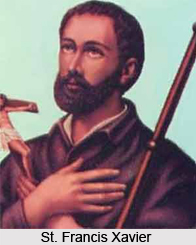 Goa`s control over the seas and the spice trade made it a much-coveted prize for rival colonial powers. Goa was ruled by the Kadamba Dynasty for over a thousand years before Portuguese adventurer Vasco Da Gama arrived near Kozhikode in Kerala in 1498. However, later it was captured by Karnatakan Vijayanagars for a short but the capture of the fort at Panaji by Alfonso De Albuquerque in 1510 began the reign of the Portuguese rulers for the next 450 years.
Goa`s control over the seas and the spice trade made it a much-coveted prize for rival colonial powers. Goa was ruled by the Kadamba Dynasty for over a thousand years before Portuguese adventurer Vasco Da Gama arrived near Kozhikode in Kerala in 1498. However, later it was captured by Karnatakan Vijayanagars for a short but the capture of the fort at Panaji by Alfonso De Albuquerque in 1510 began the reign of the Portuguese rulers for the next 450 years.
Meanwhile conversion to Christianity was initiated by the Franciscans which gathered momentum under St. Francis Xavier. He had established the Jesuit Mission in 1542. Soon afterwards laws were introduced banning any faith other than Catholicism. Hindu temples were destroyed and converted Hindus had to adopt Portuguese names such as DA Silva, Correa and De`Sousa which remain common in the region. Under the Portuguese the state of Goa began to prosper and hence was called as Golden Goa. However the transitional influence of the Jesuits alarmed the Portuguese government hence they were soon expelled in 1749. Gradually the standards of education suffered. During the 17th century Goa was invaded by `Ali `Adil Shah of Bijapur and later on it was taken over by the Dutch. This eventually led to decline of Golden Goa.
At the end of the 18th century the battle between the British with Tipu Sultan of Mysore led to the occupation of Goa by the British that lasted sixteen years from 1797. The nineteenth century saw widespread civil unrest. During British occupation many Goans moved to Mumbai and elsewhere in British India to find work.
The success of the much awaited Goans struggle for freedom from Portugal owed much to the efforts of the Indian Government. After a "liberation march" in 1955 resulted in a number of deaths and the state was blockaded. Trade with Mumbai was ceased and the transport system was cut off so Goa set out to forge international links particularly with Pakistan and Sri Lanka. This led to the building of Dabolim airport and improvement of local agricultural output. In 1961 Prime Minister Jawaharlal Nehru insisted upon that Goa, along with a few other minor Portuguese holdings should be given to India. Portugal however refused to do so. In 1955 Jawaharlal Nehru declared his government would not tolerate Portuguese presence in Goa for which Nehru send in the armed forces. On December 16, 1961, Indian troops crossed the border into Goa. Mounted in defiance the army led under the code name `Operation Vijay.` The attack resulted in the unconditional surrender of Portuguese forces on 19 December. Thereafter Goa along with Portugal`s other two enclaves Daman and Diu were taken as a part of India as a self governing Union Territory with minimum interference from Delhi.
Since Independence Goa has continued to prosper from the iron-ore exports and a booming tourist industry. Its inhabitants voted overwhelmingly to resist its merger with the Maharashtra in 1980`s and were also successful in having Konkani language as the official language status in 1987 when Goa was finally declared a full-fledged state of the Indian Union.






